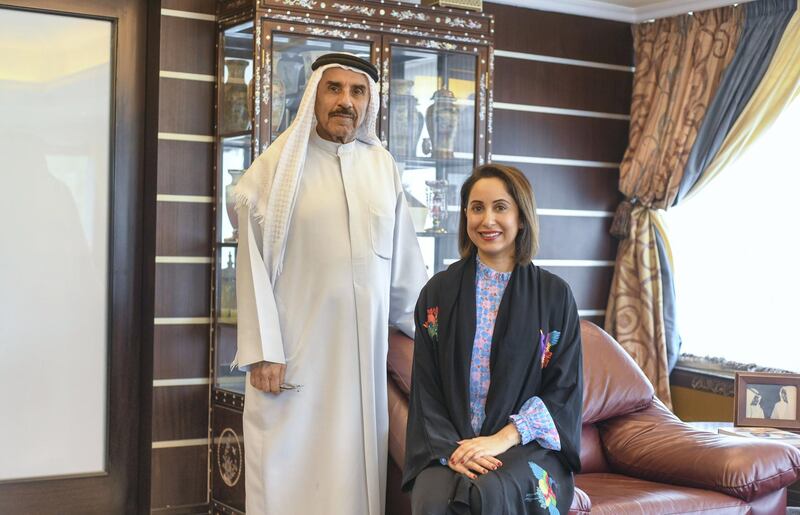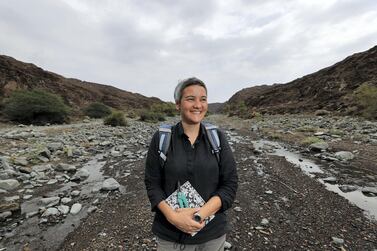Ghaf-sprinkled rice and a few fresh dates were a special occasion when Mohammed Al Fahim was a child in the 1950s.
During long summer days in Al Ain, he and his friends would head out for morning picnics under the canopy of a ghaf tree, simmering a pot of rice while they played games like hide-and-seek.
Then the children would pick the leaves off the ghaf tree and crumble them over the cooked rice, just as their parents had taught them.
“To tell you the truth, it has very little flavour and it doesn’t have a strong taste, neither salty nor sweet, but it is healthy and we were advised as kids to spread it over the rice,” says Mr Al Fahim, the author of the Abu Dhabi memoir, from Rags to Riches. “It has a taste of its own.”
Mr Al Fahim became head of one of Abu Dhabi’s leading business groups but he never forgot the lessons learnt under the ghaf.
In the coming weeks, Emirates Nature-WWF and the Al Fahim Group will launch the Connect with Nature Ghaf Majlis series where youth meet with elders to hear firsthand of desert adventures and the environment.
It is his hope that these tales will inspire youth to become custodians of the land. Sessions will be hosted over the summer at community majlises in the city of Abu Dhabi.
The partnership follows a successful collaboration between Emirates Nature-WWF and Al Fahim Group begun in 2006 on Ghaf tree conservation.
At that time, the importance of the tree was unrecognised and its habitat at risk from rapid urbanisation.
“Nobody know what the ghaf tree was,” said Hanadi Al Fahim, Mr Al Fahim’s daughter and director of Al Fahim Family Governance. “It got forgotten over the years. People didn’t see the importance of the tree. It was a matter of creating awareness.”
A petition to have the tree recognised as the national tree of the UAE resulted in legislation protecting the tree in 2008.
Emirates-WWF will honour the Al Fahim group for its role in the ghaf’s conservation at a ceremony on Tuesday.
The ghaf is enjoying its moment in the sun as the emblem of the Year of Tolerance. But the hardy evergreen, with its gnarled roots and brittle bark, was not always considered beautiful.
Ms Al Fahim hopes other unlikely species will emerge as symbols for conservation.
She has a soft spot for the nocturnal critters living in the ghaf, like the eagle owl, the long legged buzzard and the longhorn beetle, which grows to 12 centimetres and is only outsized by one species in the Brazilian rainforest.
“You have a lot of overgrazing so a lot of species are being affected,” says Ms Al Fahim. “The giant longhorn beetle is the second largest beetle in the world and nobody knows about it.”
In Mr Al Fahim’s childhood, ghaf picnics finished long before nightfall, for the tall desert trees were known to be favoured by djinn, or supernatural beings.
“Any tree out in the desert, not being frequented by humans often enough, can be haunted,” recalls Mr Al Fahim. “We took it for granted that everywhere was haunted, every the houses. We lived with the djinn anyway. We accepted them and they accepted us.”






